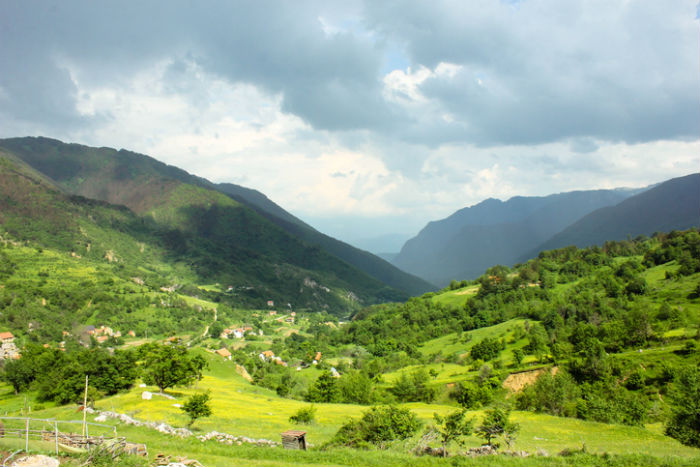Formerly a part of Yugoslavia, Bosnia and Herzegovina is located on the Balkan Peninsula. It gained independence in 1992 and is mostly mountainous with access to a tiny portion of the Adriatic Sea coastline in the south. While it’s not as popular as its neighbours such as Croatia and Montenegro, Bosnia and Herzegovina is becoming one of Europe’s most exciting destinations.

This former Yugoslav Republic brings you an intriguing atmosphere of East-meets-West that is born of blended Ottoman and Austro-Hungarian histories filtered through a Southern Slavic lens. While the country is still recovering from a devastating three-year civil war of the 1990s, today it is also known for its beautiful mountains, numerous medieval castle ruins, raft-able rivers, impressive waterfalls and bargain-value skiing. One of the most underrated countries in Europe, Bosnia and Herzegovina offers reincarnated historical centres of Sarajevo and Mostar, counterpointing splendid Turkish-era stone architecture with quirky bars, inviting street-terrace cafes, traditional barbecue restaurants and vibrant arts scenes.
Also Read: Visit These 10 Destinations Where Shakespeare’s Plays Were Set
Culture
The country’s largest ethnic groups include Bosniaks, Croatians and Serbians. The complicated history makes a tiny difference in spelling a controversial ethnic issue.

The idea of a Bosnian nationality was used to mainly apply to the nation’s Muslims, also referred to as Bosniaks. But after the bloody civil war between the three ethnic groups, ‘Bosnian’ and ‘Bosniak’ aren’t synonyms. Bosniak replaced Muslim as an ethnic term in part to avoid confusion with the religious term Muslim — an adherent of Islam while Bosnian is now someone from Bosnia or their nationality. So the three main religious groups are Muslims (mostly Bosniaks), Roman Catholic Christians (mostly Croatians) and Orthodox Christians (mostly Serbians). While the country is highly secular and religion is seen as more of a traditional and cultural identity than a set of rituals and rules.
Geography
Bosnia and Herzegovina is situated in the western Balkan Peninsula meaning Southeastern Europe. It has a 932 km border with Croatia to the north, west and southwest, a 357 km border with Serbia to the east and a 249 km border with Montenegro to the southeast. While the country is mostly mountainous encompassing the central Dinaric Alps, it borders the Adriatic Sea along its 20 km (12.42 mi) coastline. The local terrain of Bosnia and Herzegovina contains valleys and mountains which measure up to 2386 m in height.

The country is divided into a joint Bosniak/Croat Federation (about 51% of the territory) and the Bosnian Serb-led Republika Srpska or RS (about 49% of the territory). The region of Herzegovina is adjoining Croatia, Serbia and Montenegro, and traditionally has been settled by an ethnic Croat majority in the west and an ethnic Serb majority in the east.
Climate/ Best Time to Visit Bosnia and Herzegovina
The winters are bitterly cold in Bosnia and Herzegovina but summers are hot and sunny. So, the best time to visit the country would be May through September as it is less hot.
The Major Tourist attractions include:
- Stari Most, Mostar
- Kravice Waterfalls, on the Trebižat River
- Sarajevo Bobsleigh Track
- Sarajevo War Tunnel Museum
- Old Bazaar
- Sarajevo City Hall
- The Latin bridge
- Gazi Husrev-beg Museum
- National Museum of Bosnia and Herzegovina
- Vejetrenica caves
So, plan your next trip to this hilly country in the Balkan Peninsula and do let us know about your experiences below!